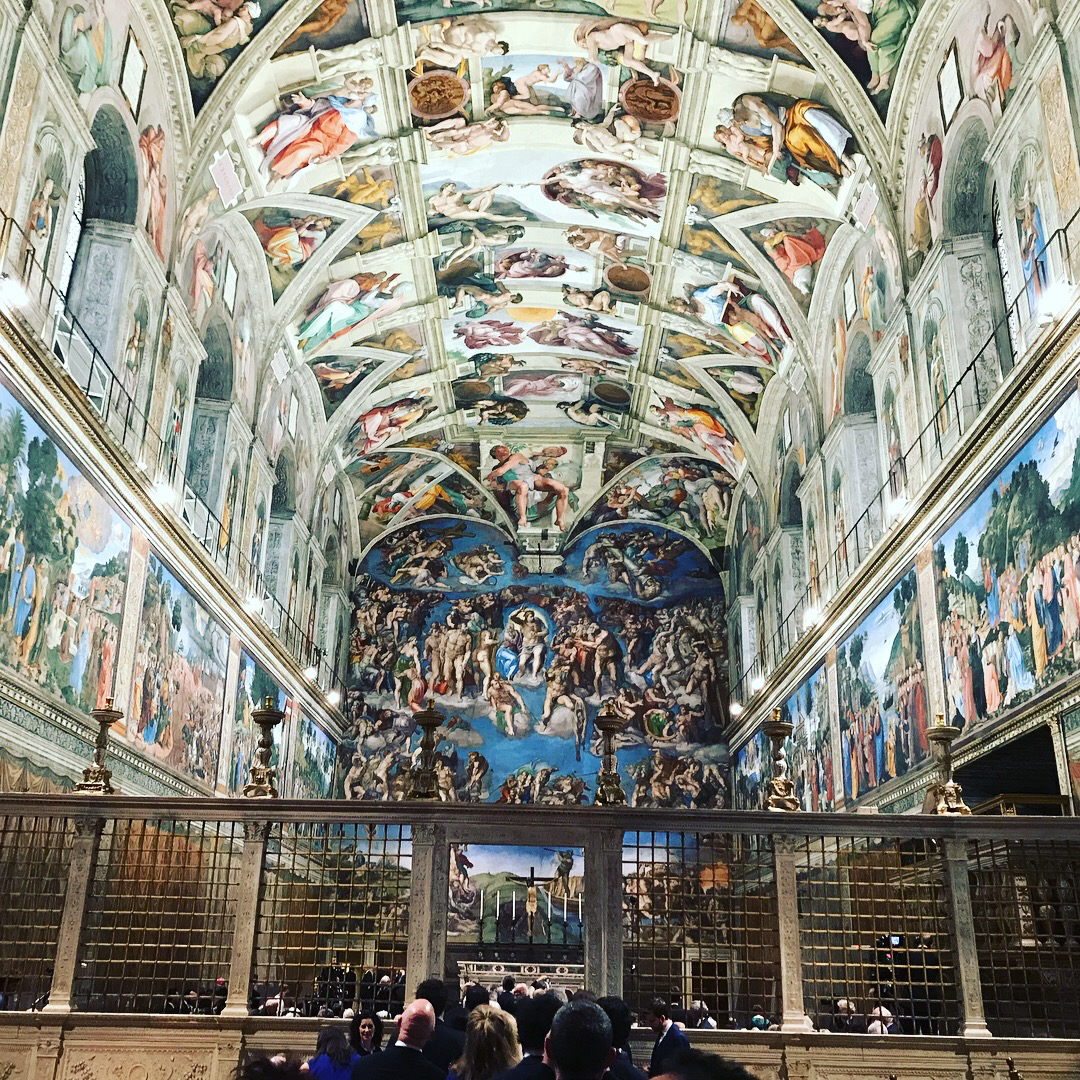In front of Michelangelo’s fresco of the Last Judgment the choir’s tenor began his solo and as he sang it felt as though the music was rising up the Sistine Chapel like incense.
This was The Sixteen performing Sir James MacMillan’s intense, dramatic and ultimately consoling setting of the 13th century Stabat Mater hymn which expresses a desire for a share in the sufferings of Mary and Jesus.
At one point the tenor sang: “May I be defended by you on the day of Judgment.” Hearing that line in front of that painting - with its iconic depiction of humanity’s final reckoning - brought Michelangelo’s work alive.
The Sixteen are a world-renowned UK based choir, founded and conducted by Harry Christophers. On Sunday 22 April a packed Sistine Chapel gathered to hear them and the Britten Sinfonia ensemble perform the Scottish Catholic composer’s work. Sir James had been commissioned by the Genesis Foundation, run by the philanthropist John Studszinski.
This event wasn’t just for those inside the chapel among them senior Vatican officials, Mark Thompson, Chief Executive of the New York Times, and Lord Heseltine (his wife is a trustee of The Sixteen). In a first for the Sistine Chapel the concert was live streamed. It went out via Classic FM’s Facebook page which apparently crashed under the weight of online traffic.
This ancient Catholic prayer, which at one point asks for the “wounds of him who is crucified deep into my heart”, still resonates despite the relentless focus on a mother’s agony.
“In this it stands in sharp contrast to our contemporary response to suffering, which is to flee from every form of pain and seek out who is to blame,” Cardinal Vincent Nichols, who helped organise and hosted the concert, wrote in the programme notes. “But this prayer cries out a willingness, born of love, to stand by those who are suffering, taking their pain into our hearts.”
Listening to Sir James’ setting of the Stabat Mater is painful. It also transfixes, captivating the audience for an hour in a contemplative prayer.
But this is no sweet mysticism.
After a soft beginning of plainchant the concert swiftly moves onto the tremendous agony of the crucifixion. “The sorrowful mother stood full of tears by the cross while her son hung there,” the words of the first verse say.
The waves of grief are unsettling and haunting as the violins play piercing almost discordant notes. At other moments it leaves you are left feel confused, unsettled and almost desolate.
But then the turning point. “Holy mother, bring this to pass,” the choir sing over and over again. “Let me weep with you, pious one, grieving with him who is crucified, so that I may live.”
There was a different pace to the music, and from the depths of suffering something new emerges. Out of the dying embers, Sir James explains, the piece starts to move in a “new direction”.
The final verses of the Stabat Mater represent the first rays of dawn sunshine after a long, dark and tormenting night. “When my body dies, let my soul be given, the glory of paradise. Amen.”
After being taken to the bewildering depths of darkness, there was consolation. This is a story that spoke to people in the 13th century. The performance last Sunday shows it still speaks powerfully to those in the 21st.
PICTURE: People gather in the Sistine Chapel ahead of the concert ©Christopher Lamb



 Loading ...
Loading ...